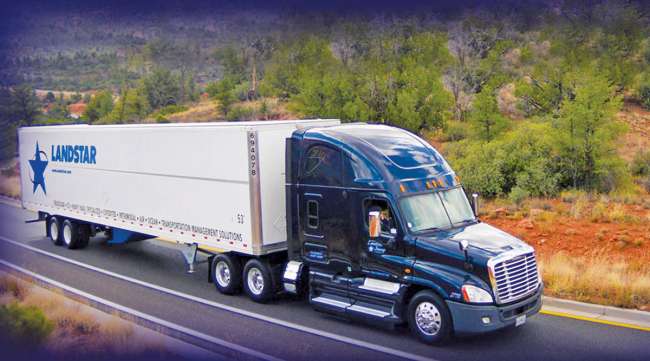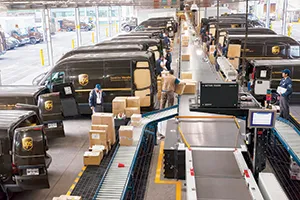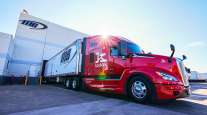Managing Editor, Features and Multimedia
Industry Sector Rankings Show Growth, Acquisitions by Carriers

[Stay on top of transportation news: Get TTNews in your inbox.]
Most of North America’s largest for-hire motor carriers operating in many diverse segments of the trucking industry reported higher revenues last year as contract freight rates held up far better than spot market activity.
American Trucking Associations’ seasonally adjusted for-hire truck tonnage index climbed 3.4% in 2022, the largest annual increase since 2018. The index is based predominantly on contract freight rather than the spot market, which cooled significantly last year.
At the same time, truck capacity has loosened significantly since the days of the 2021 freight boom, when shippers struggled to secure enough trucks to cover a surge in volumes driven by the economic recovery from the coronavirus pandemic.
Meanwhile, mergers and acquisitions continue to alter the business landscape in trucking.
Truckload/Dedicated
Knight-Swift Transportation, which retained its top ranking as the largest truckload carrier in North America, is poised to grow even bigger through its planned purchase of U.S. Xpress Enterprises, which ranks No. 8 on this sector list. That acquisition, announced in March, was not yet complete at press time, so U.S. Xpress maintains its separate ranking for now.
See the 2023 Top 100 rankings
►Growth Despite Softer Freight Market
►The Truckers of Tomorrow
►Taking Aim at the Parking Shortage
►Managing Regulatory Compliance
►Interactive Map
►Sector Rankings Show Growth, Acquisitions
Heartland Express, which ranks No. 13 in the truckload sector, expanded its operations through its acquisitions last year of Smith Transport and CFI’s nondedicated U.S. truckload business.
Coming in at No. 2 on the sector list is J.B. Hunt Transport Services, which grew its dedicated contract carriage and truckload business by more than 32% last year.
Landstar System, Werner Enterprises and Penske Logistics round out the top five, followed closely by Schneider and TFI International.
Other for-hire carriers with more than $1 billion in truckload and dedicated revenue include Ryder System’s dedicated fleet operations, Crete Carrier Corp. and CRST The Transportation Solution.
Less-Than-Truckload
Although there are no ranking changes this year among the industry’s 10 largest LTL providers, each of those companies grew its business in 2022, according to company reports and estimates by SJ Consulting Group.
FedEx Freight, the top-ranked LTL carrier, increased its revenue to $10.1 billion from $9 billion a year earlier.
Ranking second on the LTL sector list is Old Dominion Freight Line with more than $6.1 billion in annual revenue. It was followed by Yellow Corp., XPO and Estes Express Lines, with each posting revenues of more than $4 billion.
TFI International, ABF Freight, R+L Carriers, Saia Inc. and Southeastern Freight Lines hold the remaining top 10 spots in the LTL segment.
Intermodal
Familiar names continue to dominate the list of North America’s largest intermodal and drayage carriers. Although the intermodal sector rankings have seen little change from a year ago, most of these companies reported strong revenue growth.
J.B. Hunt Intermodal easily retained its top ranking as it grew its revenue over the $7 billion mark in 2022, compared with just under $5.5 billion a year earlier.

J.B. Hunt Transport Services appears on both the truckload/dedicated and intermodal/drayage sector lists. (Sergio Flores/Bloomberg News)
Second-ranked intermodal carrier Hub Group also expanded its business by a significant margin last year, with intermodal revenue increasing to $3.3 billion from about $2.4 billion the prior year.
Evans Delivery and Schneider, which rank No. 3 and 4, respectively, also posted strong growth in their intermodal businesses last year.
IMC Cos. rounds out the top five, followed by Universal Intermodal, NFI and Swift Intermodal.
Within the top 10, the only ranking change from a year ago was ContainerPort Group moving up one position to No. 9, edging past No. 10 Forward Air.
Refrigerated
Much like other segments of the trucking industry, large refrigerated carriers generally expanded their businesses in 2022.
Prime Inc., the largest refrigerated carrier in North America, grew its revenue 19% to more than $2.4 billion last year.
At the same time, consolidation continued to alter the competitive landscape in the refrigerated space. Hirschbach Motor Lines climbed to No. 3 in the refrigerated sector with more than $1.1 billion in revenue after last year’s acquisition of John Christner Trucking, which had been No. 7 on this list.
KLLM Transport Services, which ranks No. 2 just ahead of Hirschbach, also surpassed $1.1 billion in revenue in 2022.
Another fast-growing refrigerated carrier is No. 4 Stevens Transport, which increased its revenue to $910 million in 2022.

Prime Inc. retained its spot atop the refrigerated sector ranking with 19% revenue growth in 2022. (John Sommers II for Transport Topics)
Flatbed/Heavy Specialized
In the flatbed and specialized heavy-haul sector, Daseke narrowly maintained its top ranking with annual revenue of $1.77 billion, just ahead of second-ranked Landstar System with $1.76 billion.
Meanwhile, No. 3 flatbed hauler PS Logistics increased its revenue to $1.1 billion. Not far behind on the list are No. 4 Anderson Trucking Service and No. 5 Bennett Family of Cos., with each reporting more than $900 million in flatbed/specialized revenue.
Tank/Bulk
In the tank/bulk segment, top-ranked Kenan Advantage Group continued its rapid growth last year. The fuel and chemical hauler increased its revenue to nearly $2.5 billion in 2022, compared with $1.9 billion the prior year.
The industry’s next-largest bulk carriers are Quality Carriers, Trimac Transportation Services, Heniff Transportation Systems and Foodliner/Quest Liner.
Package/Courier
While most of the commercial transportation industry is highly fragmented, the package delivery sector is dominated by two titans.
FedEx Corp. and UPS Inc. are far and away the largest package-delivery companies in North America, with segment revenues of nearly $78 billion and more than $64 billion, respectively, but several other large companies also are active in this space.

UPS' package-delivery service landed them No. 2 on the package/courier ranking. (UPS Inc.)
Canadian parcel courier Purolator, which ranks third on this list, increased its revenue to $2.8 billion in 2022.
Next on the package/courier list is OnTrac, which merged with LaserShip in 2021 to create a coast-to-coast final-mile delivery network. The combined company announced earlier this year that the entire operation will move forward under the OnTrac name and brand.
Household Goods/Commercial Delivery
Carriers in the household goods segment also grew last year. Sector-leading UniGroup, the parent of United Van Lines and Mayflower, reported $1.6 billion in 2022 revenue, up from $1.5 billion a year earlier.
Third-ranked Atlas World Group posted annual revenue of more than $766 million, up from $709 million last year.
Motor Vehicle/Driveaway
The largest carriers operating in the motor vehicle/driveaway segment were unchanged from a year ago, with United Road Services and Jack Cooper Holdings continuing to lead the segment.
Air/Expedited
In the air/expedited segment, Forward Air maintained its top ranking with revenue of more than $1.1 billion.
Covenant Logistics Group moved past ArcBest to claim the No. 2 spot on the sector list after growing its expedited revenue to $452 million from $337 million last year.
In the mail sector, FedEx continues to top the list of U.S. Postal Service contractors with $1.9 billion in revenue in 2022, although that was down from $2.17 billion the prior year.
Meanwhile, mail hauler 10 Roads Express passed the $1 billion revenue mark in 2022.
Other large USPS contractors include UPS, Evo Transportation & Energy Services and Matheson Trucking.
Want more news? Listen to today's daily briefing below or go here for more info:





